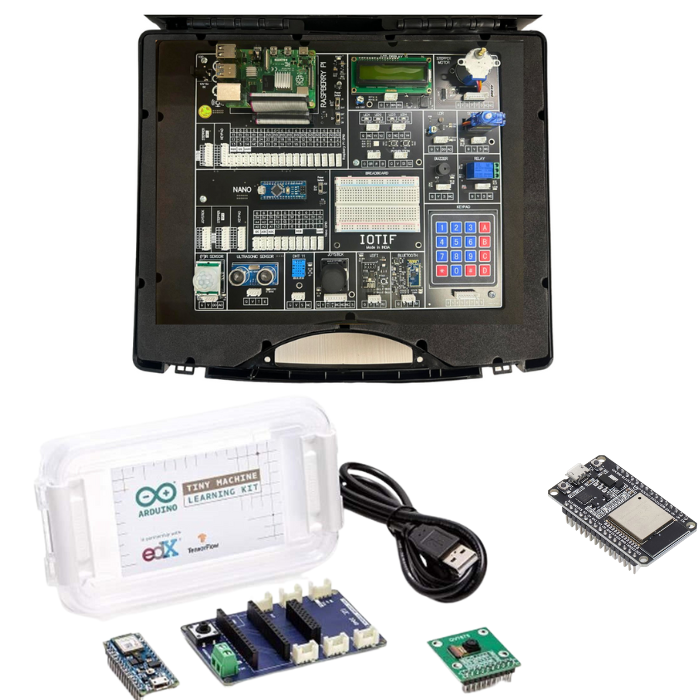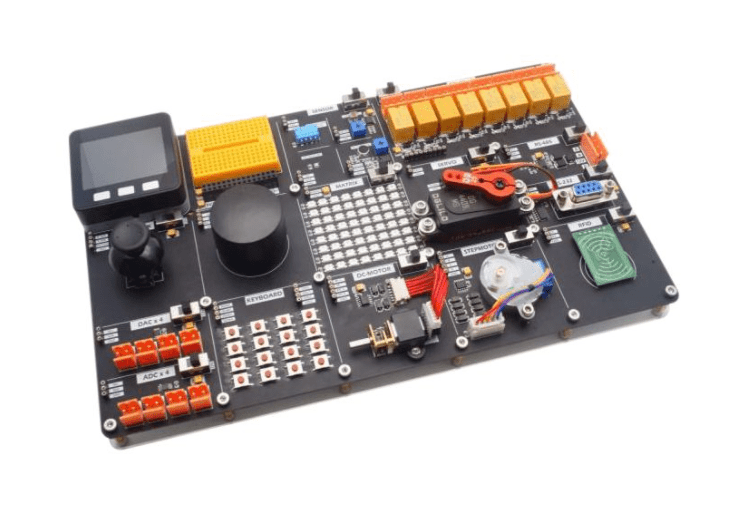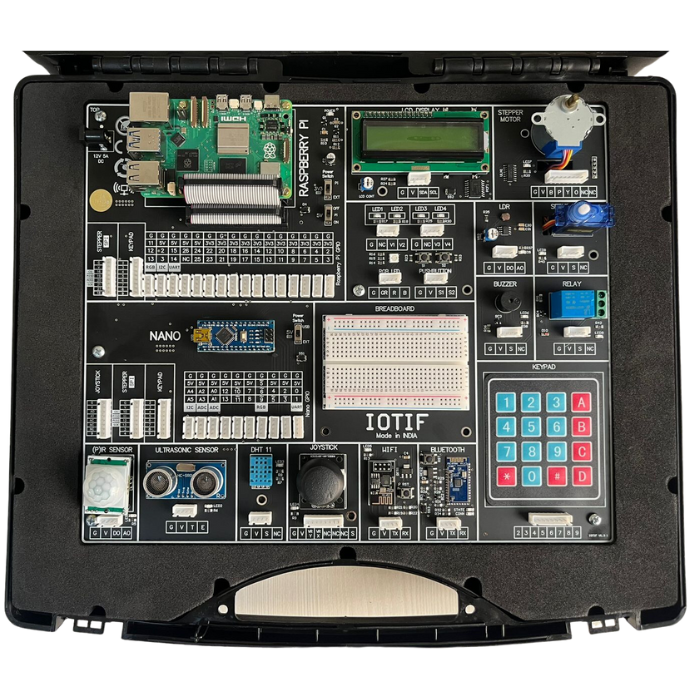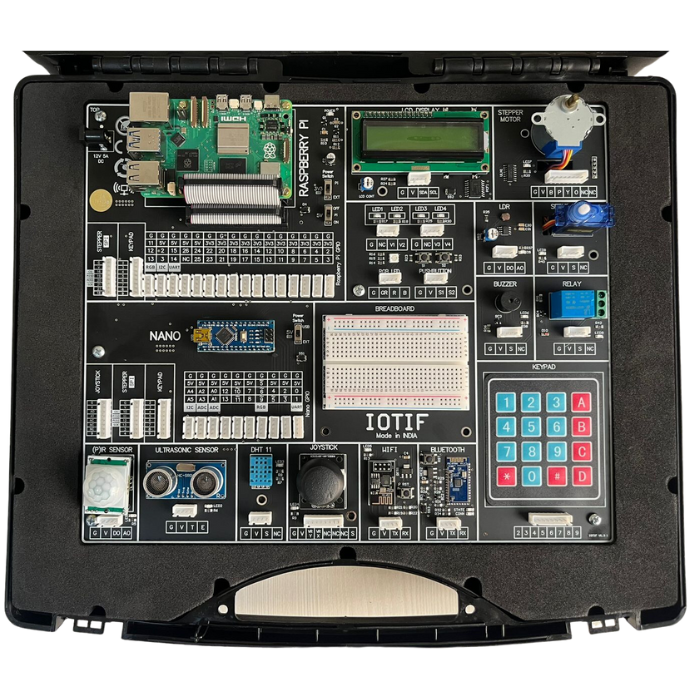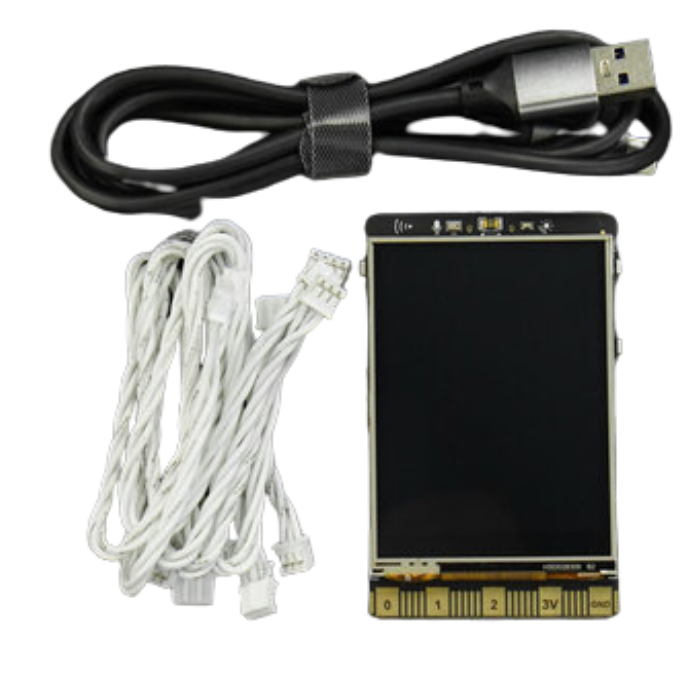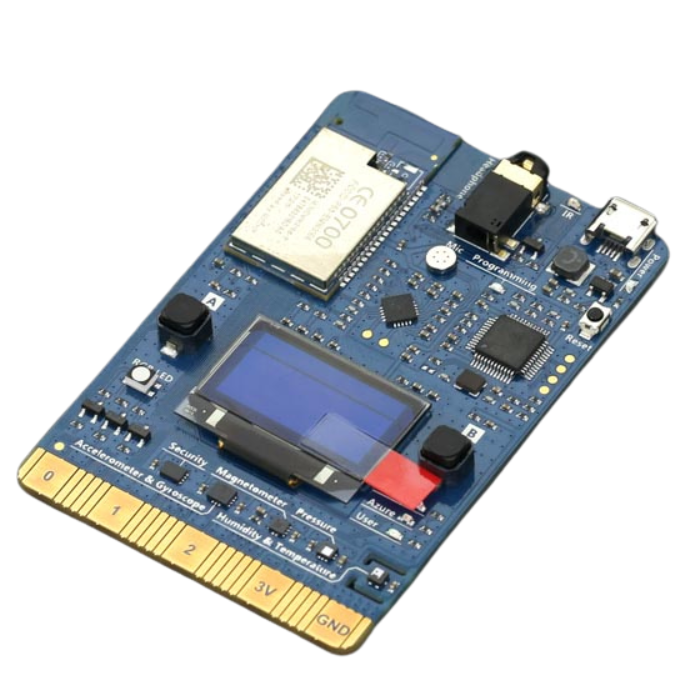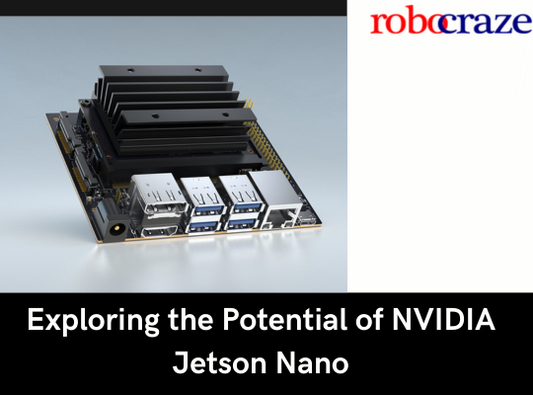Introduction
The rapid evolution of technology has ushered in a transformative era where IoT and Machine Learning converge to redefine our lives and businesses. In this introductory chapter, we delve into the foundational understanding of their impact and significance.
Understanding the Impact of IoT and Machine Learning
The Internet of Things (IoT) is not just a network of connected devices; it is a paradigm shift where everyday objects become intelligent contributors to our digital ecosystem. Simultaneously, Machine Learning (ML) emerges as the powerhouse of Artificial Intelligence, allowing systems to learn and adapt autonomously.
The integration of IoT and ML goes beyond mere technological advancements; it permeates our daily routines. From smart homes that anticipate our needs to personalized recommendations from online platforms, the impact is profound. Understanding the nuances of this impact is crucial to navigating the digital landscape effectively.
Intersection of IoT and Machine Learning
The synergy between IoT and ML is not just a technical collaboration; it's a strategic alliance that amplifies the capabilities of each. Exploring how these technologies complement and enhance each other is essential for grasping the full spectrum of possibilities they offer.
The theoretical concepts gain substance when we witness real-life applications. Examining instances where IoT and ML converge to create seamless and intelligent solutions provides tangible proof of their potential.
As we embark on this exploration, it's vital to acknowledge the dynamic nature of technology. The chapter concludes by examining the current growth trends in IoT and ML. Understanding the trajectory of these technologies sets the stage for the subsequent chapters, where we delve deeper into their individual realms and collaborative potential.

Unveiling IoT and Machine Learning
In the realm of technological advancement, understanding the intricacies of the Internet of Things (IoT) is paramount. This section demystifies IoT, offering insights into its definition, scope, and evolutionary journey.
IoT Definition and Scope
- IoT Defined: At its core, IoT is a network of interconnected devices that communicate and exchange data seamlessly. It extends beyond conventional computing devices, encompassing everyday objects embedded with sensors, software, and connectivity.
- Scope of IoT: The scope of IoT is vast, permeating various sectors such as healthcare, agriculture, manufacturing, and more. From smart homes to industrial automation, IoT's impact is transformative, enhancing efficiency and enabling smarter decision-making.
Evolution of IoT
- Early Days: The concept of IoT dates back to the early 2000s, where it primarily focused on connecting devices to the internet for remote monitoring and control. The initial phase laid the foundation for the interconnected world we now inhabit.
- Advancements: Over the years, IoT has evolved exponentially. Technological advancements in miniaturization, connectivity, and data processing have propelled IoT into the mainstream. Today, it goes beyond mere connectivity, incorporating artificial intelligence and machine learning for enhanced capabilities.
Connected Devices in Everyday Life
- Ubiquity of Connected Devices: The proliferation of connected devices has become ubiquitous in our daily lives. From smart refrigerators that suggest grocery lists to wearables tracking health metrics, IoT has seamlessly integrated into our routines.
- Enhancing Daily Life: Connected devices enhance convenience, efficiency, and personalization. They create an ecosystem where information flows seamlessly, enriching our experiences and simplifying tasks.
As we unravel the layers of IoT, understanding the symbiotic relationship with Machine Learning (ML) becomes imperative. This section decodes ML, exploring its introduction, connection to artificial intelligence, human-like learning, and its pivotal role in enhancing IoT devices.
Introduction and Connection to AI
- ML's Role in AI: Machine Learning is a subset of artificial intelligence that empowers systems to learn and improve from experience without explicit programming. It forms the backbone of AI applications, allowing devices to adapt and evolve based on data patterns.
- Intertwined with AI: The connection between ML and AI is inseparable. ML algorithms enable devices to make data-driven decisions, enhancing their autonomy and intelligence. This symbiotic relationship is at the core of the technological revolution.
Human-like Learning
- Mimicking Human Learning: ML's human-like learning approach involves algorithms analyzing data, identifying patterns, and making predictions or decisions. This capacity for autonomous learning enables devices to mimic human cognitive functions, leading to more intuitive and adaptive technologies.
Role in Enhancing IoT Devices
- Empowering IoT Ecosystems: ML plays a pivotal role in enhancing the capabilities of IoT devices. By processing vast amounts of data generated by interconnected devices, ML algorithms enable devices to make informed decisions, adapt to user behaviors, and continually optimize performance.
In the journey of uncovering the potentials of IoT and ML, understanding the fundamentals of each becomes the stepping stone to a deeper exploration of their collaborative prowess.

The Power of IoT and Machine Learning Integration
Making Devices Human-like In the realm of technology, the fusion of IoT and Machine Learning is paving the way for devices that emulate human-like characteristics, revolutionizing our daily experiences.
Addressing Daily Challenges
In the pursuit of creating devices with human-like attributes, the integration of IoT and Machine Learning addresses inherent challenges in our daily lives. From predicting user preferences to adapting to dynamic situations, these smart devices are designed to be more than mere tools, becoming intuitive companions in our routines.
Role of Machine Learning in Personalization

At the core of making devices human-like is the role of Machine Learning in personalization. Machine Learning algorithms analyze vast datasets generated by IoT devices, discerning patterns and tailoring responses based on individual behaviors. This level of personalization ensures that technology aligns seamlessly with user preferences, offering a more intuitive and satisfying user experience.
A quintessential example of this integration is seen in smart coffee makers. Beyond the conventional programmable schedules, these devices leverage Machine Learning to understand waking patterns, adjusting brewing times to match individual preferences. The coffee maker becomes a personalized assistant, ensuring the perfect cup tailored to the user's morning routine.
Transforming the World: Real-world Impacts
The integration of IoT and Machine Learning extends beyond personalization, ushering in real-world impacts that transform the way we communicate, experience personalized services, and navigate industries.
- Improving Communication: In the era of interconnected devices, communication takes a leap forward. Devices equipped with IoT and Machine Learning capabilities comprehend natural language, enabling more fluid and human-like interactions. From voice-activated assistants to smart home systems, communication becomes not just a command but a nuanced dialogue.
- Personalized User Experiences: Businesses leverage this integration to craft personalized user experiences. From online platforms predicting consumer preferences to tailored recommendations, the synergy of IoT and Machine Learning creates an environment where users feel understood and catered to on an individual level.
- Cost Savings in Industries: Industries witness significant cost savings through the predictive capabilities of Machine Learning in an IoT ecosystem. Predictive maintenance, driven by machine learning algorithms, ensures timely identification of potential issues in machinery, preventing costly breakdowns and optimizing operational efficiency.
- Safety and Security Measures: The real-world impact extends to safety and security measures, where IoT and Machine Learning collaborate to predict, prevent, and respond to potential threats. From surveillance systems with facial recognition to predictive analysis of safety hazards, these technologies enhance overall safety protocols.
Now, we've unveiled the transformative power of integrating IoT and Machine Learning, making devices not just smart but human-like in their understanding and response. The real-world impacts resonate across various facets of our lives, promising a future where technology aligns seamlessly with human needs.
Impact on Daily Lives and Businesses
Refining Communication with IoT The integration of IoT technology is reshaping the way we communicate on a daily basis, introducing a new era of smart and intuitive interactions.
- Role of Voice-Activated Devices: Voice-activated devices have emerged as pivotal players in refining communication through IoT. From smart assistants to voice-controlled appliances, these devices respond to natural language, making technology more accessible and user-friendly. Users can articulate commands, ask questions, or initiate actions, seamlessly integrating technology into their daily routines.
- Personal Assistant Devices: The advent of personal assistant devices marks a significant shift in the dynamics of human-machine interaction. Devices like smart speakers not only respond to voice commands but also proactively provide information, recommendations, and updates. This evolution transforms these devices from mere tools to indispensable personal assistants, enhancing efficiency and convenience.
- Shaping Daily Interactions: IoT's impact on communication extends beyond individual devices, shaping the way we interact with our surroundings. Connected environments, equipped with IoT devices, enable a cohesive and responsive ecosystem. For instance, smart homes adjust lighting, temperature, and entertainment preferences based on user behavior, creating a seamless and personalized living experience.
Personalized User Experiences in Business

In the realm of business, the fusion of IoT and Machine Learning unfolds new dimensions in crafting personalized user experiences, setting the stage for enhanced customer satisfaction and loyalty.
- Amazon and Netflix Case Studies: Amazon and Netflix stand as exemplary cases where IoT and Machine Learning converge to tailor user experiences. These platforms analyze user behavior, preferences, and history to recommend products and content with remarkable accuracy. The personalized touch not only improves user engagement but also fosters brand loyalty.
- Beyond Product Recommendations: The impact goes beyond conventional product recommendations. Businesses leverage IoT data to understand customer journeys, allowing them to anticipate needs and offer timely and relevant services. Whether it's suggesting complementary products or customizing service delivery, the integration of IoT amplifies the business-consumer relationship.
- Shaping Environments with IoT: IoT's influence on personalized experiences extends to physical spaces. Retail environments, for instance, deploy IoT to create immersive and tailored shopping experiences. From smart mirrors suggesting fashion choices to interactive displays providing real-time information, IoT transforms retail spaces into dynamic, customer-centric hubs.
Cost Savings and Efficiency in Industries
The marriage of IoT and Machine Learning in industries transcends personalized experiences, contributing significantly to cost savings and operational efficiency.
- Machine Learning in Predictive Maintenance: Industries adopt Machine Learning for predictive maintenance, revolutionizing equipment upkeep. By analyzing data from sensors embedded in machinery, Machine Learning algorithms forecast potential issues, allowing proactive maintenance to prevent costly breakdowns. This predictive approach optimizes operational efficiency and reduces downtime.
- Goldcorp Case Study: The Goldcorp case exemplifies the transformative impact of IoT-driven efficiency. Through the integration of sensors and Machine Learning, the mining company accurately predicts maintenance needs for its vehicles, preventing costly disruptions. This predictive model not only saves resources but also ensures uninterrupted operations.
- Real-time Analysis for Savings: Real-time data analysis, facilitated by IoT, empowers industries to make informed decisions swiftly. From monitoring energy consumption to optimizing supply chain logistics, the continuous flow of data allows businesses to identify inefficiencies, reduce waste, and streamline operations, ultimately translating into substantial cost savings.
Strengthening Safety and Security
The synergy of IoT and Machine Learning extends its influence to bolster safety and security measures, ushering in a proactive approach to addressing potential risks.
- Internet of Trains Project: Projects like the Internet of Trains exemplify the application of IoT in enhancing safety. By embedding sensors in trains and tracks, this initiative utilizes Machine Learning to identify signs of potential failures. The result is a preemptive response to maintenance needs, ensuring the safety and reliability of transportation systems.
- Facial Recognition and Privacy Concerns: Facial recognition, powered by IoT and Machine Learning, enhances security but also raises privacy concerns. While this technology aids in identifying potential threats in public spaces, its ethical implications prompt a delicate balance between security measures and privacy rights. Striking this balance remains a critical aspect of strengthening safety through technology.
- Predicting Accidents and Crimes: The predictive capabilities of IoT and Machine Learning redefine safety measures by foreseeing accidents and crimes. Data from diverse sources, such as video cameras and environmental sensors, enable algorithms to analyze patterns and anticipate potential risks. This proactive approach enables authorities to intervene before incidents occur, fundamentally enhancing public safety.
Now, we've delved into the multifaceted impact of IoT on daily lives and businesses, exploring its role in refining communication, crafting personalized user experiences, driving cost savings, and strengthening safety and security measures. The integration of IoT emerges as a transformative force, reshaping the dynamics of interaction and operation across various domains.
Exploring Infinite Possibilities
As the integration of IoT and Machine Learning continues to unfold, the horizon of possibilities expands beyond the known examples, ushering in a new era of customization, enhanced experiences, and innovation across diverse sectors.
Customizing IoT for Businesses
In the realm of business, the customization of IoT solutions takes center stage. Tailoring IoT applications to specific industry needs amplifies efficiency and effectiveness. Whether it's optimizing supply chain logistics, automating manufacturing processes, or refining customer relationship management, businesses are increasingly leveraging IoT to create bespoke solutions that align with their unique requirements.
- Industry-Specific Solutions: Customization extends to developing industry-specific IoT solutions that address nuanced challenges. For instance, manufacturing facilities deploy IoT sensors for real-time monitoring of machinery, enhancing production efficiency.
- Scalable Infrastructure: Customized IoT solutions are designed to scale seamlessly with business growth. The flexibility to adapt to changing demands ensures that the technology remains an asset in the long term.
- Integration with Existing Systems: To maximize efficiency, customized IoT solutions integrate seamlessly with existing business systems. This synergy ensures a smooth transition and coexistence of IoT technology with established processes.
Enhancing Customer Experience
IoT's impact on customer experience transcends conventional approaches, offering businesses the opportunity to forge deeper connections and exceed customer expectations. From retail to hospitality, the customization of customer interactions through IoT leaves a lasting impression.
- Personalized Interactions: IoT facilitates the collection of real-time data, enabling businesses to personalize customer interactions. From personalized product recommendations to tailored in-store experiences, IoT heightens engagement.
- Omni-Channel Connectivity: Businesses leverage IoT to create an omni-channel experience, seamlessly integrating online and offline interactions. Customers can transition between platforms effortlessly, enjoying a cohesive brand experience.
- Predictive Customer Service: IoT's ability to analyze data in real-time empowers businesses to predict customer needs. Proactive customer service, anticipating issues before they arise, enhances satisfaction and loyalty.
Innovative Applications in Various Sectors
The exploration of IoT possibilities extends to a myriad of sectors, each witnessing innovative applications that redefine traditional paradigms. From healthcare to agriculture, the infusion of IoT sparks creativity and novel approaches to age-old challenges.
- Smart Agriculture: In agriculture, IoT sensors monitor soil conditions, weather patterns, and crop health. This data-driven approach enables farmers to optimize irrigation, reduce resource wastage, and increase overall yield.
- Healthcare Wearables: The healthcare sector embraces IoT through wearables that monitor vital signs, providing real-time health data. This not only facilitates remote patient monitoring but also enhances preventive care measures.
- Smart Cities: The concept of smart cities integrates IoT to streamline urban living. From intelligent traffic management to waste disposal systems, IoT contributes to creating sustainable, efficient, and livable urban environments.
In the realm of infinite possibilities, the customization of IoT for businesses, the enhancement of customer experiences, and the innovative applications across various sectors stand as testaments to the transformative potential of this technological synergy. As industries continue to explore and adapt, the landscape of IoT promises to redefine the boundaries of what is achievable in our interconnected world.
Conclusion
In the dynamic landscape of the developing world, the fusion of IoT and Machine Learning has emerged as a transformative force. From revolutionizing daily lives to propelling businesses forward, this synergy holds unparalleled potential. As we conclude our exploration into this technological marriage, it's clear that the possibilities are limitless. The interconnected future promises efficiency, innovation, and unprecedented growth. Stay tuned for the next wave of progress, as IoT and Machine Learning reshape our world, fostering a smarter, interconnected, and more vibrant future for all. Embrace the evolution, click into a future of limitless possibilities!




